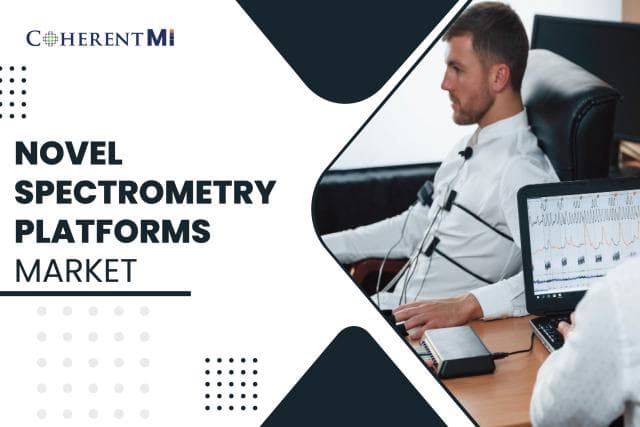Mass spectrometry has become one of the most widely used analytical techniques in various fields like proteomics, metabolomics, drug discovery and clinical diagnostics due to its high sensitivity and specificity. However, conventional spectrometry platforms face limitations like low throughput, high cost of ownership and complex workflows. This has fuelled the development of novel compact and easy-to-use spectrometry platforms that offer superior performance for routine analysis.
Growing Demand from Healthcare and Biopharma Industries
The healthcare and biopharma industries have always been at the forefront of adopting new technologies for improving diagnosis, monitoring disease progression and developing new drugs. Mass spectrometry based methods have become indispensable tools in proteomics, metabolomics and other 'omics' applications that drive modern drug discovery and precision medicine efforts. However, traditional spectrometry platforms are complex, big-sized systems requiring specialized technicians to operate. This limits their widespread adoption, especially in clinical settings and resource-constrained labs.
Novel compact platforms that are fully-automated and plug-and-play have gained significant traction as they address key limitations of conventional systems. Their small footprint and user-friendly design enables positioning them on every laboratory bench and even deployment at point-of-care settings. Advanced software and automated workflows further simplify mass spec analysis for non-expert users. Rising focus on personalized healthcare and companion diagnostics has also driven demand for compact systems that can perform high-quality analysis with minimum operator intervention.
Rising Availability of Compact Systems
Major spectrometry vendors have launched several novel compact platforms over the past few years to capitalize on the growing demand. Examples include Thermo Fisher's Q Exactive series, Sciex's X500 platform, Waters' MALDI Synapt G2-S system and Agilent's 6545 Q-TOF system. These tabletop systems offer high resolution, accuracy and reproducibility for proteomics, metabolomics and other applications. Their plug-and-play designs with touchscreen interfaces minimize training requirements. Integrated software further automate workflows for seamless setup and analysis.
Several new players have also entered this niche segment with innovative compact designs. Examples include Bruker's timsTOF fleX system, a portable MALDI-TOF that can be deployed outside laboratories. Desktop platforms like Kore Technology's Kimsey mass spectrometer promise routine analysis for under $50,000. Such affordable systems could enable mass spec applications in new settings beyond traditional reference laboratories. Novel designs integrating sample prep and ionization are further simplifying workflows on a single platform.
Rising Investments and Partnerships
Major pharmaceutical and biotech companies have significantly increased investments in startups developing novel compact mass spec platforms. Their focus is to deploy easy-to-use systems across their extensive R&D networks to boost productivity and efficiency of drug discovery programs. For example, Bristol-Myers Squibb invested $10 million in a startup developing portable mass spectrometers for clinical applications. Merck also formed strategic partnerships to deploy affordable high-resolution desktop systems for streamlining compound synthesis and testing.
Academic research organizations are also evaluating compact systems to enhance structural characterization capabilities within resource-limited settings. Several instrument makers have partnered with academic institutions and hospitals to facilitate technology transfer and demonstration of clinical utility. Nanomedomics recently collaborated with a major cancer centre on a multicentre clinical study using a compact MALDI imaging platform for rapid tumour analysis. Increased adoption in real-world clinical and academic facilities will further validate utility and drive wider acceptance of novel affordable systems.
Rising Competitive Landscape
The rising commercial opportunities in the novel compact spectrometry segment have intensified competition. Major existing players are aggressively expanding their portfolio of desktop systems with high specifications targeting niche applications. At the same time, a dynamic startup ecosystem focused on disruptive innovations is emerging. Their disruptive technologies include 3D printed miniature analyzers, mobile mass spec devices and integrated lab-on-chip solutions.
While established vendors leverage their technical expertise and extensive customer base, startups distinguished themselves through agile development supported by strategic partnerships. Venture capital investments in early-stage innovators topped $150 million in 2021 alone. Several startups have also leveraged crowdfunding campaigns in addition to accelerator funding to commercialize their prototypes faster. Mergers and acquisitions are expected to rise as large companies seek to gain new technologies and strengthen product portfolios. The dynamic competitive environment will continue to spur technological advances and cheaper solutions to drive the growth.
Conclusion
Rising demand from pharmaceutical, biotech and clinical sectors along with greater accessibility of novel compact mass spectrometry platforms is expected to significantly drive the growth in the coming years. Their small footprint, ease-of-use and affordable pricing enables expanded adoption beyond traditional laboratories. Continuous innovations integrating multiple analytical capabilities on a single plug-and-play unit will further simplify workflows. Strong funding and strategic partnerships will fuel further product development, commercialization and real-world demonstration of clinical and industrial utility.
